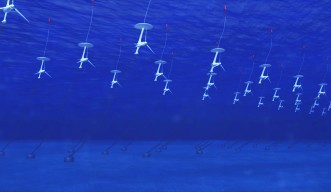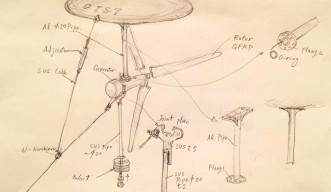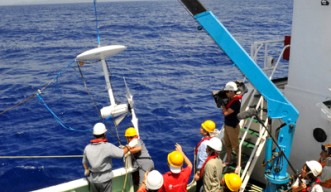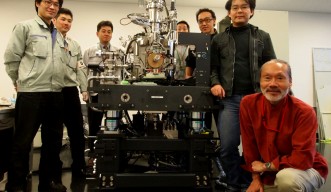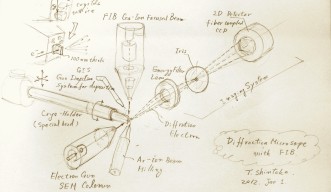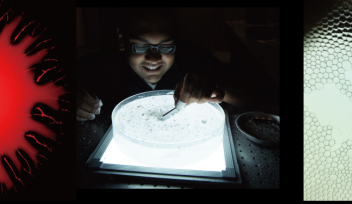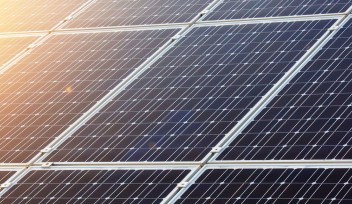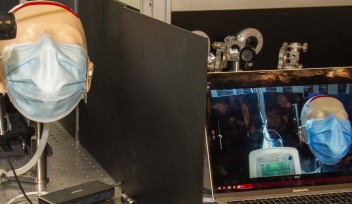Interdisciplinary Innovator
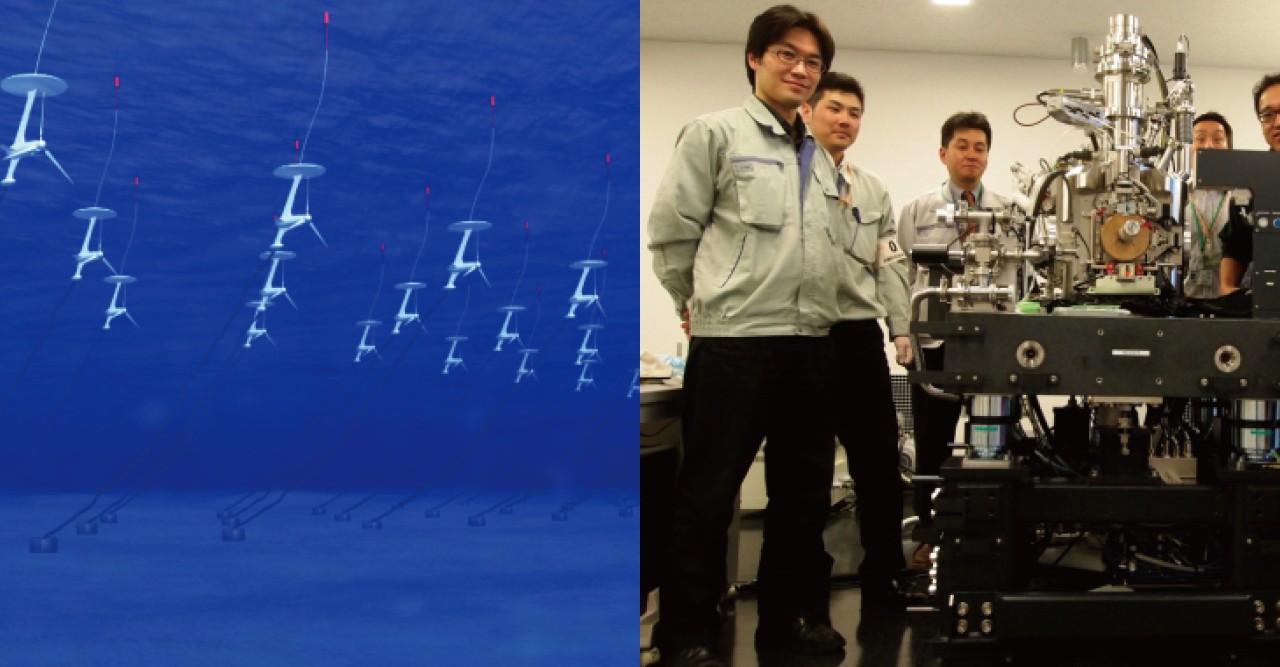
When Professor Tsumoru Shintake first formed the Quantum Wave Microscopy Unit at OIST in September 2011, he knew his grand scheme to develop a new, innovative electron microscope wouldn’t happen overnight. While he planned the construction of the apparatus that he hopes will be able to construct crisp holograms of biological samples as small as viruses, Shintake has simultaneously pursued a project that first captured his interest as a teenager.
“In the early 1970s, especially in 1973 during the global oil crisis, I couldn’t stop thinking about alternative energy sources,” says Shintake. “As a 16-year-old I constructed a wind power generator that produced one kilowatt of energy and powered the sign of the noodle shop my parents owned.”
Only five months after the Fukushima Daiichi nuclear disaster, Shintake moved his laboratory from RIKEN’s SPring-8 large synchrotron radiation facility to OIST. When he gazed out his new office window, the turquoise East China Sea inspired him to once again work to develop clean energy technology – but on a larger scale.
“Harnessing energy from ocean currents is still relatively uncharted territory, which attracts me to the idea even more,” says Shintake. With the risk and benefit of nuclear power remaining a hot topic in Japan, Shintake says “we need to develop alternative energy technologies that are safe, inexpensive and friendly to the environment.”
Shintake started working on the conceptual design of an ocean current power generation farm called the Sea Horse Project only a few months after he arrived to OIST. His group has already begun testing prototypes and eventually he hopes to develop a system of 300 huge propellers stationed 100 meters underneath the water’s surface. Positioned in the Kuroshio Current, which flows north past the Okinawa Islands and along mainland Japan’s Pacific Coast, the farm should generate one million kilowatts of energy in total – equivalent to the power of one nuclear reactor.
But now, after nearly a year in the making, Shintake’s revolutionary electron microscope project has also come to fruition. On March 5, 2013 the parts for the electron microscope arrived at OIST’s doorstep and over the past week, members from Shintake’s group and Hitachi High-Tech Science (former SII Nano Technology), the microscope’s manufacturer, have assembled it.
Electron microscopes have a much greater capacity for capturing images of tiny objects than do light optical microscopes because the wavelength of an electron beam is considerably smaller than that of a photon beam, or light. Current techniques in electron microscopy entail shooting a high-energy beam of electrons through a sample and multiple lenses to produce a magnified image, but Shintake and his group want to do away with the lens and use a low-energy beam of electrons instead. His design relies on the relationship between energy and image contrast in electron microscopy: the lower the energy of the electron beam, higher the contrast of the image. “Viruses are almost transparent, so high-contrast images should tell us a lot about their structure,” he says. “High-energy beams also damage samples more quickly, so using low-energy beams will keep them more intact for a longer exposure time.”
Another challenge for Shintake might be how he plans to capture images of viruses without using a lens. The function of a lens is to focus the electron beam, or photon beam with an optical microscope, on a specific plane to form an image. Since all lenses distort images at least around the edges, Shintake plans to infer the structure of a virus by scattering electrons off carefully sliced cross sections of the sample, similar to how x-ray images are created, and collect the data in a computer. He will then construct a three-dimensional hologram of the interior and exterior of the specimen by piecing together the images of its cross sections.
After leading a team of 200 staff who built SACLA, RIKEN’s X-ray Free Electron Laser, the endeavor which won him the Free Electron Laser Prize in 2011, and now leading two groups that will carry out two radically different projects in electron microscopy and renewable energy resources, Shintake has certainly proved himself to be an interdisciplinary innovator – just the kind of researcher we like to have around at OIST.
Research Unit
For press enquiries:
Press Inquiry Form










